Day: 57-66 Location: Barcelona, Catalonia, Spain Weather: Sunny, 15C-18C
Las ramblas, I’ll meet you
We’ll dance around la Sagrada Familia
Drinking Sangría
Mi niña, te amo mi cariño
Mamasita rica
Sí, te adoro, señorita
Los otros, viva la vida
Come on, let’s be free in Barcelona
Las ramblas, I’ll meet you
Come on and dance with me in Barcelona
Drinking Sangría
I just want to be in Barcelona
Mamasita, rica
Feel that summer breeze in Barcelona
Nosotros, viva la vida
Siempre vida, Barcelona
November 12-21, 2017
Viva la vida indeed! Another overnight bus (I never learn my lesson) brought me sleepy and slightly cranky to the wonderful Mediterranean city of Barcelona, Spain. Although, at the time I visited, it was very risky to say out loud that Barcelona was a part of Spain as Catalonian nationals and Spaniards alike had spent the better part of the last few weeks violently clashing over the Catalan Independence referendum. Luckily, things had settled considerably by the time I arrived.
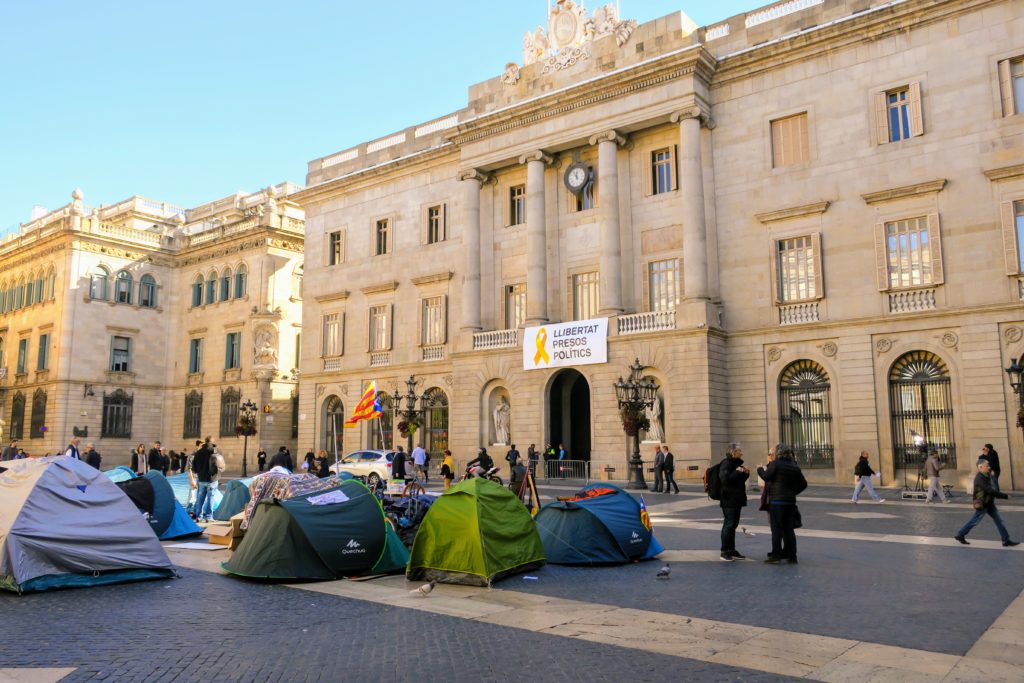 Catalonians were peacfully occupying the square in front of Barcelona’s city hall
Catalonians were peacfully occupying the square in front of Barcelona’s city hall
Barcelona is one of the world’s most visited city and a global leader in terms of culture, commerce, education, sports, fashion and the arts.
Barcelona receives approximately 32 million visitors, in a city whose population is just under 2 million. That’s a lot of foreigners! So much so, that there is often talks over imposing a ‘tourist tax’ or even limiting new hotel constructions in the city. Only time will tell…

Barcelona was my ‘holding’ zone, a transition point in my trip. On my ‘top 5 things I want to do during my travels’ list, visiting the German Christmas markets was #1. Therefore, I needed to stay in Barcelona long enough to arrive in Berlin when the markets opened. So, I reserved the smallest room the hotel had to offer, a windowless, closet size oasis in the city. Luckily for me, when I checked in, the super kind clerk at the desk informed me that they had upgraded me seeing as how I would be with them for 10 nights. Start the car! And then I had the pleasure of discovery this lovely, personalized welcome note waiting for me on the pillow…. this was going to be good!


There is so much to see and do in Barcelona, it can be hard to start! My strategy: go for a walk and see what you come across. My hotel was only a few blocks away from the city’s central avenue, La Rambla, so that seemed like a good place to start. Lined with trees, the street stretches across the heart of the city, a full 1.2 km. Along La Rambla are many of the private residences designed by Barcelona’s golden child, Antoni Gaudi – I spent many days discovering these masterpieces, however more on that in a later post!
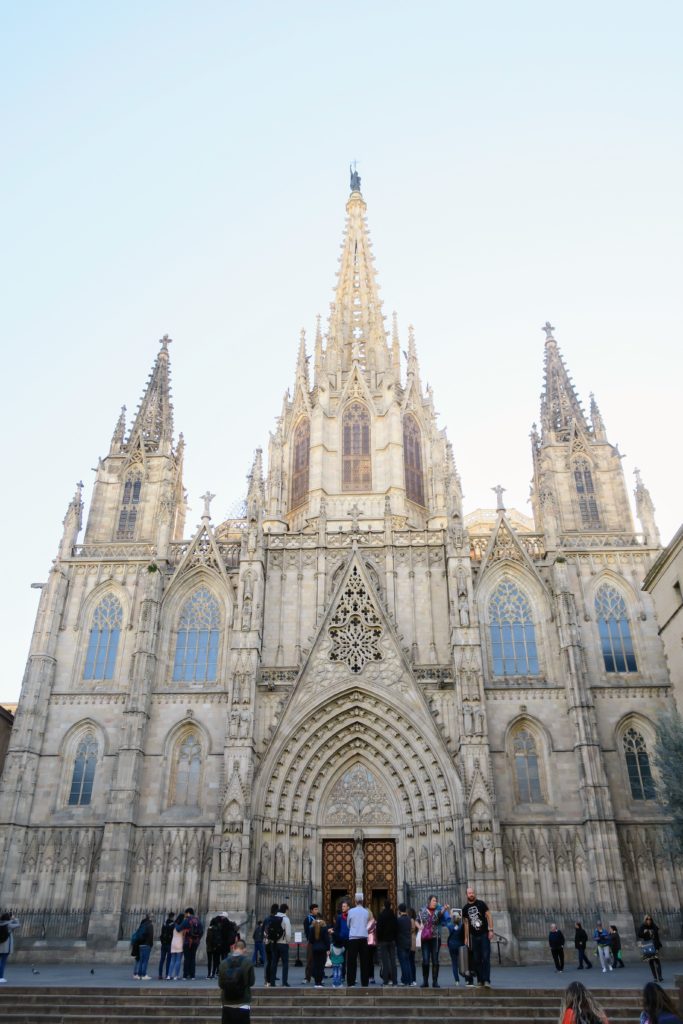

My walk led me past many landmark, where I eventually found myself standing in front of the Barcelona Cathedral, officially known as The Cathedral of the Holy Cross and Saint Eulalia. The interior of the cathedral was unremarkable in terms of grand European churches (these Spaniards are mcuh more austere than there French counterparts!). The best part of the cathedral was by far, the roof!
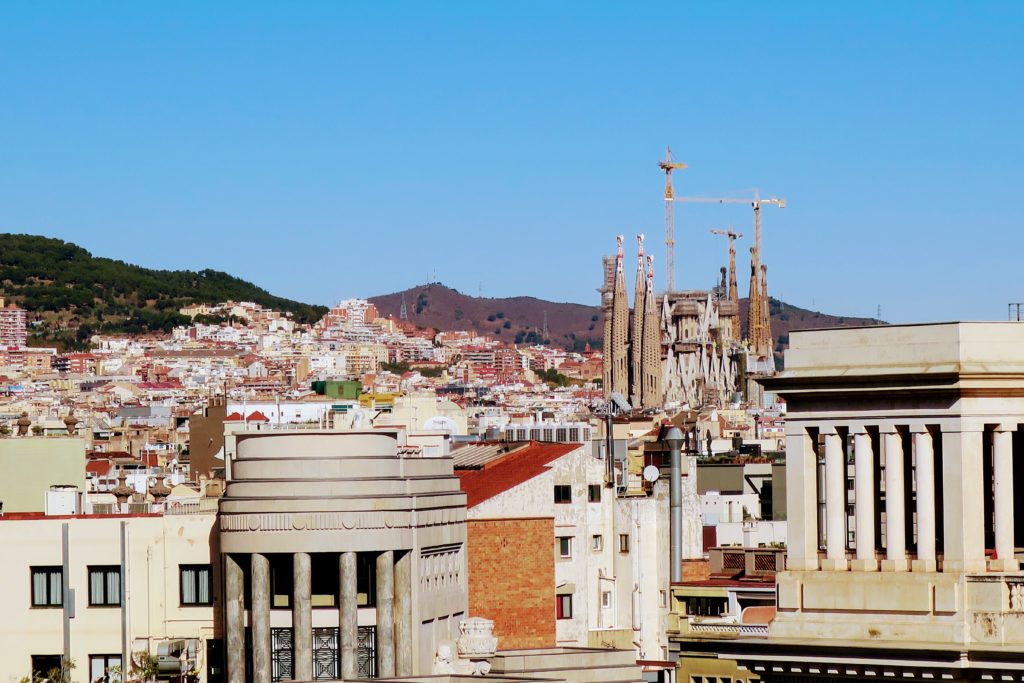
Panaromic views over the city of Barcelona, including the famous Sagrada Familia as seen above.

Castells
While travelling, I didn’t really do a lot of research before arriving at each new destination – basically, I didn’t have the time and I didn’t feel like it. I fully embraced this carefree, go-with-the-flow, come as they may attitude towards travelling. Which, for those that know me well, is a big departure from my previous travel style. When I explained my new attitude to a friend of mine, I got the answer “who are you?”. Ok, I’m rambling but all of this is to say that I didn’t really look up in advance things to visit in Barcelona. 2 days before I was to leave, I did a quick search online for “human towers Barcelona”. I had remembered reading about these human towers in some travel book however I was pretty sure that I was not in the right time of the year for the big competition. However, what I didn’t realize was that Barcelona held weekly competitions for its local colles (teams). And, luck would have it, there was one tomorrow! I set off to find this random neighbourhood the next day. And random indeed. In a small square, wedge between residential buildings and a local park, a very small crowd was starting to gather. I anxiously awaited the competitors to arrive and looked around trying to find a stage or some type of roped off area, perplexe I couldn’t find one. I soon realized that I was standing right in the middle of the action! As you can see by the photo below, left, the castell (tower) was built less than 3 feet away from me! I felt like a part of the team!
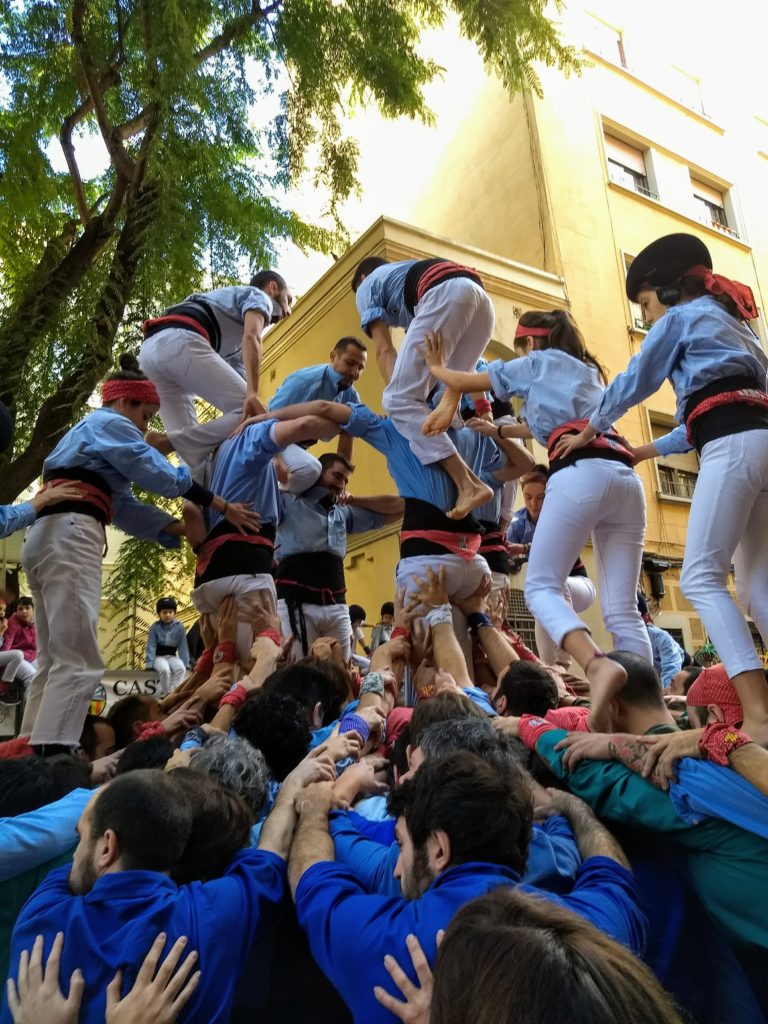

These human towers are absolutely impressive to behold! The energy, enthusiasm, team work and skill required was astonishing! A rare feat indeed. However, the technical aspects of building the tower is the most important and impressive part. Wikipedia explains it best:
A castell is considered a success when assembly and disassembly can be done in complete succession. The assembly is complete once all castellers have climbed into their designated places, and the enxaneta climbs into place at the top and raises one open hand. The enxaneta then climbs down the other side of the castell, after which the remaining levels of castellers descend in highest to lowest order until all have reached safety. Aside from the people who climb to form the upper parts of the tower, others are needed to form the pinya, or bottom base of the castell, to sustain its weight. Members of the pinya (most often men) also act as a ‘safety net’ if the tower structure collapses, cushioning the fall of people from the upper levels.
The kicker: the enxaneta is almost always a small child! Usually BELOW THE AGE OF 8!!!! WHAT???!!! The wear helmets but come on. These small children with fragile bones and brains climb several feet in the air, all in the name of culture and competition. And if that wasn’t the scary part, they also have to come down as quickly and as safely as possible. The disassembly of the castell, done amidst the cheering of the crowd, is often the most treacherous stage of the event. Sadly, out of the 6 castells that were successfully created, the very last one crumbled on disassembly, sending one of the castellers crashing to the ground and requiring an ambulance escort. A stark reminder of the dangers these athletes face.
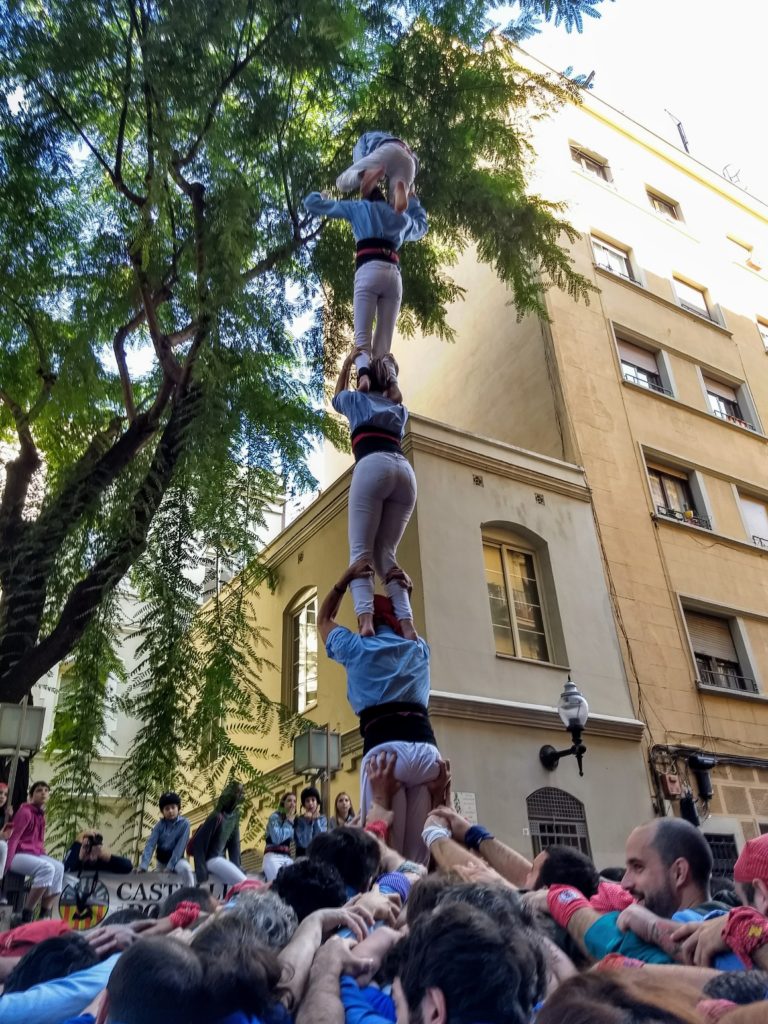

Food, food and yes, more food
In true Julie fashion, I also sought out the best local places for, you guessed it, food! One of the most populair tourist markets is La Boqueria Market or more commonly known as Las Ramblas Market. Amidst an endless sea of vendor stalls, one can find freshly squeezed fruit juices (for 1euro, imagine!), sweet treats, plentiful seafood and everything else in between. Many a meal was spent in these halls.
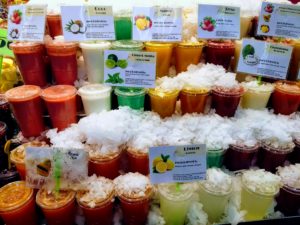


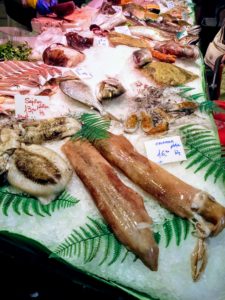

Flamenco, ole!
Wherever you travel in the world, visitors will inevitably come across “tourist traps”, those made-for-tourists cultural events that seem more cinematic than authentic. In Barcelona, tablao (Flamenco shows) are exactly that. Paired with dinner or aperitivo, they charge an arm and a leg to gullible patrons. Well, on this occasion, I hemmed and hawed about attending, and finally I found myself sitting front row, drink in hand, my whole body reverbarating from the rythme of the dancers. When in Rome, right? Truly, the passion of the dancers, the thundering stomping and clapping were indeed a sight to behold.
